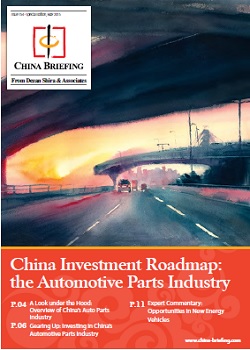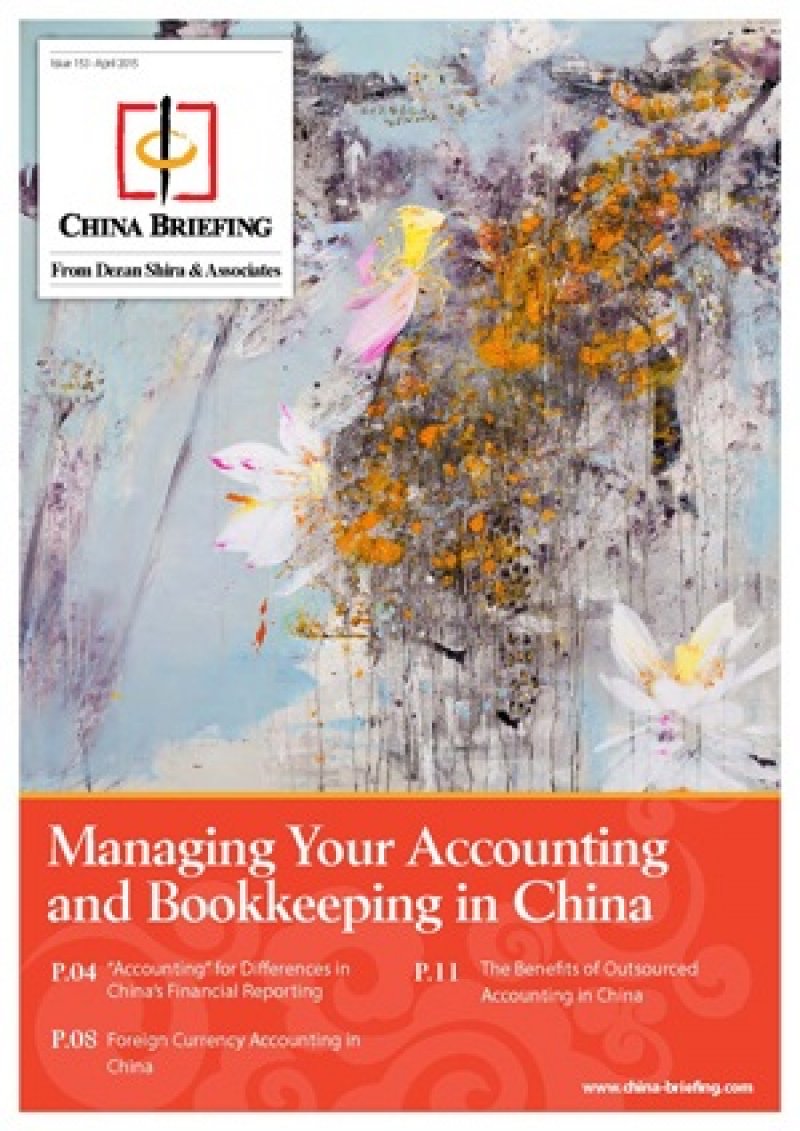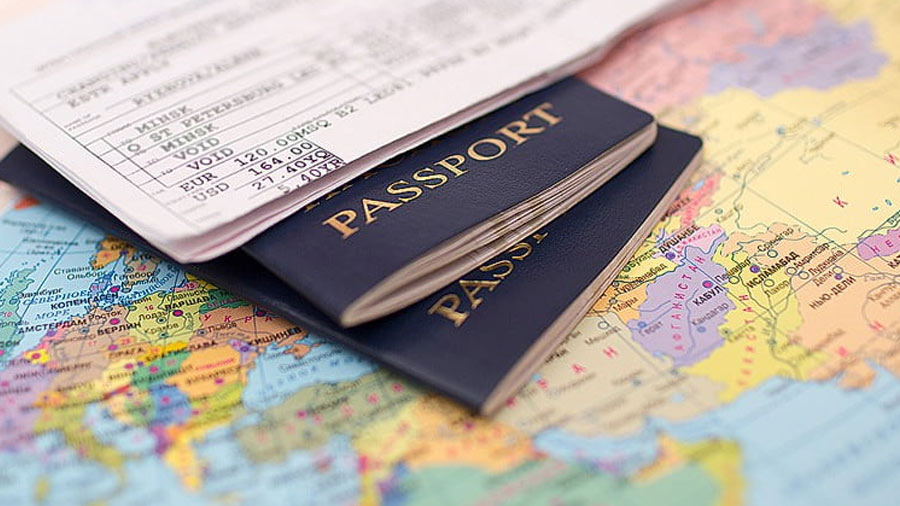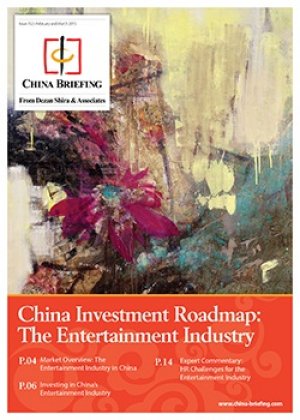China Investment Roadmap: the Automotive Parts Industry
 The newest issue of China Briefing Magazine, titled “China Investment Roadmap: The Automotive Parts Industry,” is out now and available as a complimentary download in the Asia Briefing Bookstore through the month of June.
The newest issue of China Briefing Magazine, titled “China Investment Roadmap: The Automotive Parts Industry,” is out now and available as a complimentary download in the Asia Briefing Bookstore through the month of June.
Contents:
- A Look under the Hood: Overview of China’s Auto Parts Industry
- Gearing Up: Investing in China’s Automotive Parts Industry
- Expert Commentary: Opportunities in New Energy Vehicles
These are exciting times for the automotive industry in China. The country recently overtook the United States to become the world’s largest car market and shows no signs of slowing down. As more and more Chinese enter the middle class, their demands for mobility increases. As a result, car use in China has exploded.
In its wake we find the industry that makes the wheels spin: the automotive parts industry. Attracted by the rapid demand for cars, thousands of automotive parts companies have sprung up across China, resulting in the highly fragmented sector we find today. Up until recently, car makers were able to exert pressure on parts manufacturers, drawing the attention of China’s anti-trust regulators. Following a host of harsh fines and penalties meted out to the major car makers, auto parts manufacturers are now able to sell directly to repair shops and consumers – a move that enhances their price setting capability.
In this issue of China Briefing, we present a roadmap for investing in China’s automotive industry. We begin by providing an overview of the industry, and then take a comprehensive look at key foreign investment considerations, including investment restrictions, tax incentives and manufacturing requirements. Finally, we discuss foreign investment opportunities in a part of the industry that receives substantial government support: new energy vehicles.
|
Asia Briefing Ltd. is a subsidiary of Dezan Shira & Associates. Dezan Shira is a specialist foreign direct investment practice, providing corporate establishment, business advisory, tax advisory and compliance, accounting, payroll, due diligence and financial review services to multinationals investing in China, Hong Kong, India, Vietnam, Singapore and the rest of ASEAN. For further information, please email china@dezshira.com or visit www.dezshira.com. Stay up to date with the latest business and investment trends in Asia by subscribing to our complimentary update service featuring news, commentary and regulatory insight. |
![]()
 Managing Your Accounting and Bookkeeping in China
Managing Your Accounting and Bookkeeping in China
In this issue of China Briefing, we discuss the difference between the International Financial Reporting Standards, and the accounting standards mandated by China’s Ministry of Finance. We also pay special attention to the role of foreign currency in accounting, both in remitting funds, and conversion. In an interview with Jenny Liao, Dezan Shira & Associates’ Senior Manager of Corporate Accounting Services in Shanghai, we outline some of the pros and cons of outsourcing one’s accounting function.
China Investment Roadmap: The Entertainment Industry
In this special edition China Briefing Industry Report, we cast our gaze over the broad landscape of China’s entertainment industry, identifying where the greatest opportunities are to be found and why. Next, we detail some of the most important issues for foreign investors to be aware of, including legal, regulatory, and tax considerations specific to the industry. Lastly, we provide an insider analysis of the sector’s unique HR & payroll challenges.
Using China’s Free Trade & Double Tax Agreements
In this issue of China Briefing, we examine the role of Free Trade Agreements and the various regional blocs that China is either a member of or considering becoming so, as well as how these can be of significance to your China business. We also examine the role of Double Tax Treaties, provide a list of active agreements, and explain how to obtain the tax minimization benefits on offer.
- Previous Article China Releases Harshest Food Safety Law in History
- Next Article The Intricacies of Maternity Leave across China: Regional Differences





























